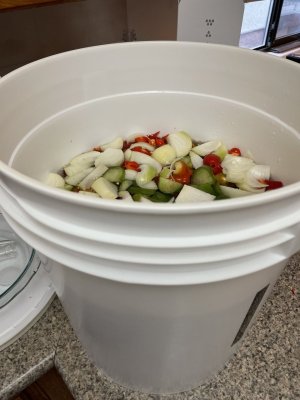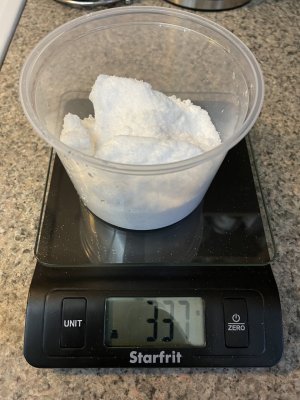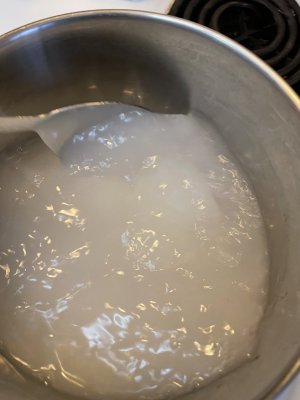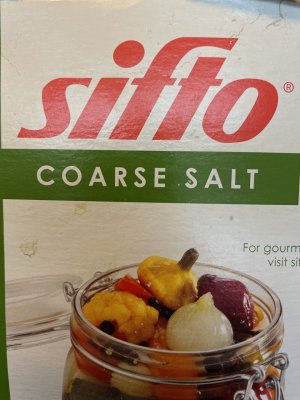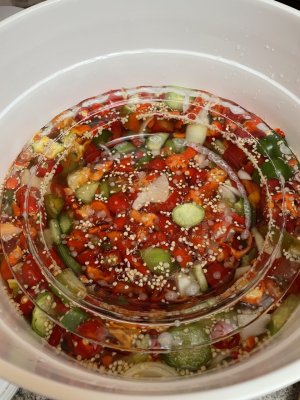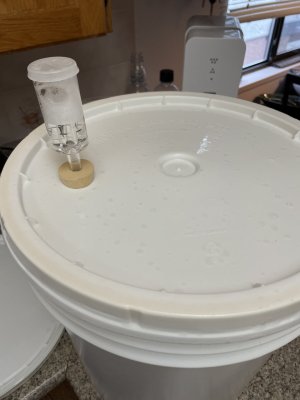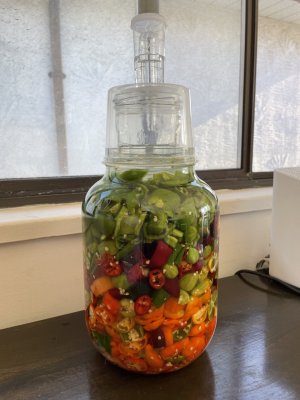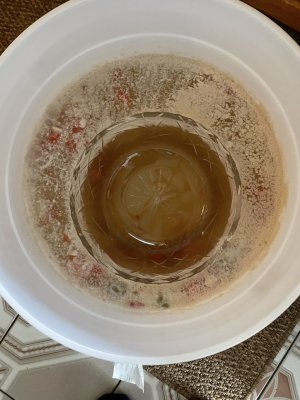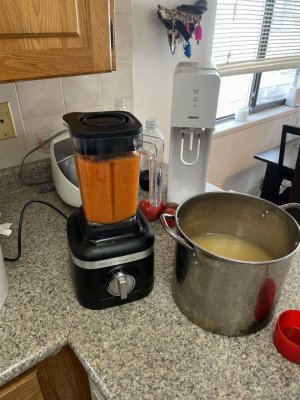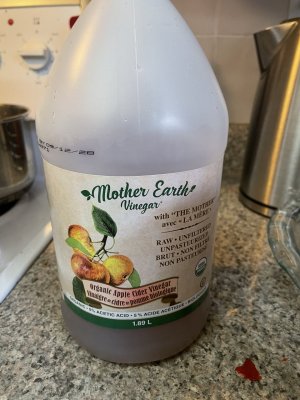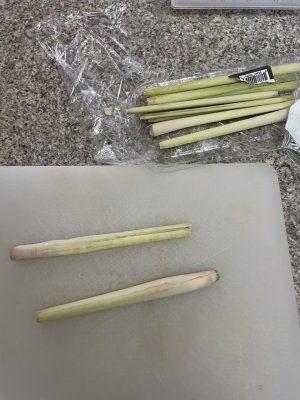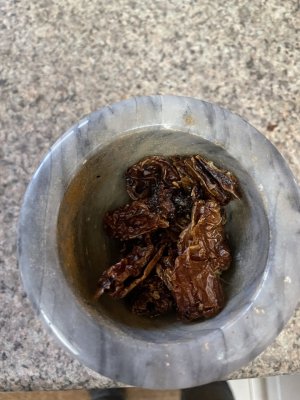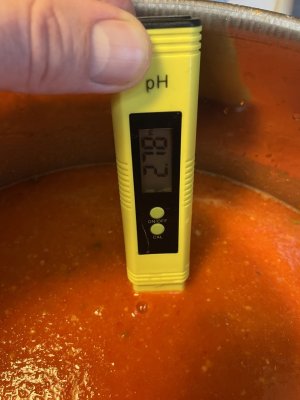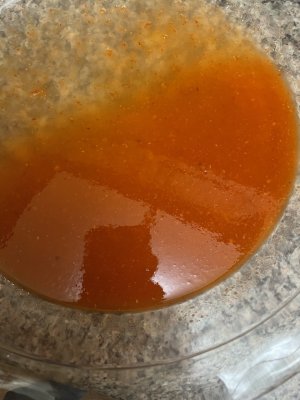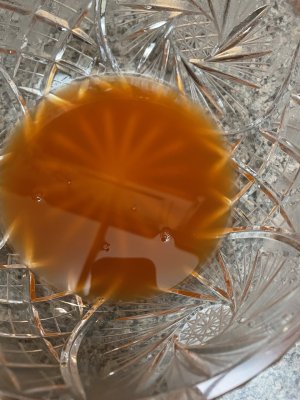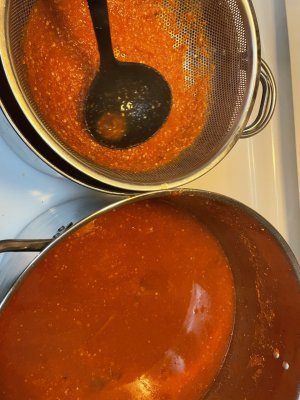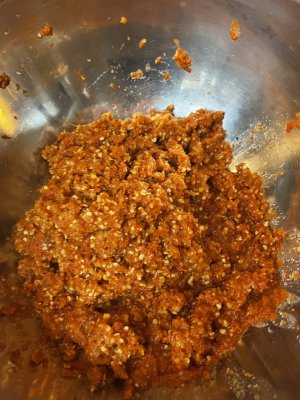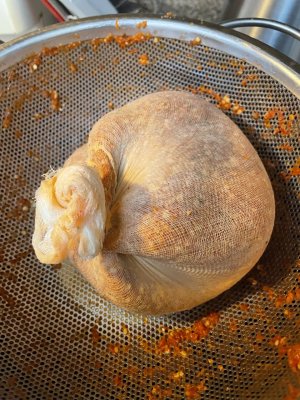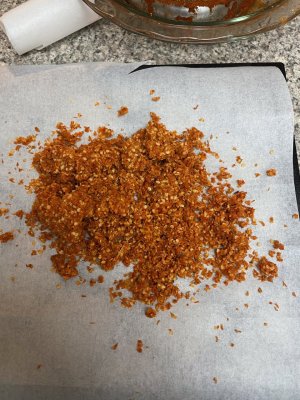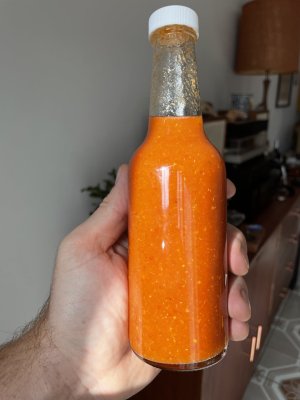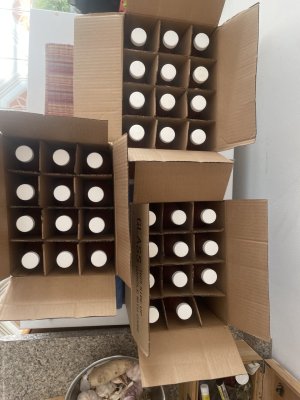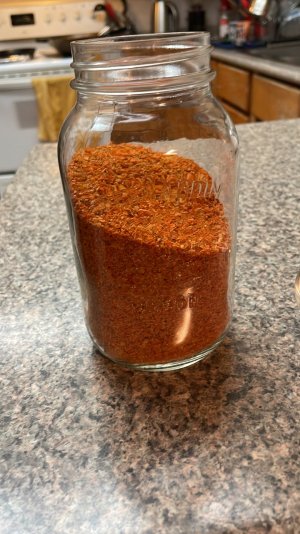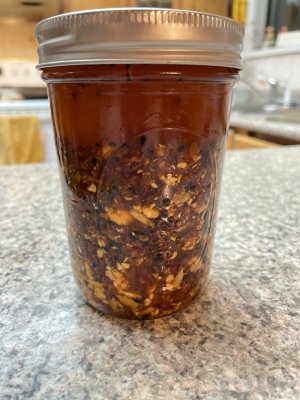Alex_c
Well-Known Member
Since someone in the gardening hacks post asked me to post my process for fermenting peppers, I figured I’d create a new post explaining it.
This is my third year of making hot sauce, so I’m by no means an expert. I do have some experience home brewing, and there are some techniques that carry over. The hot sauce I have made has been excellent, so I must be doing something right!
First, start off with some peppers. Bonus points if you grow your own. I’m using Aji Rico, Red Habanero, Ghost, and Super Chili peppers. This should be a pretty hot batch, just how I like it!
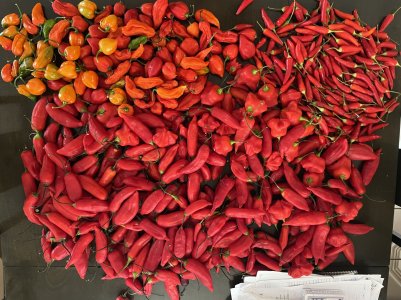
Next wash them well with cold water
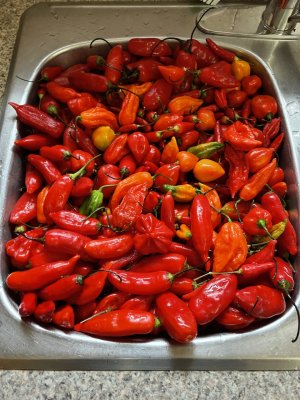
You can add other fruits and veg to your fermentation. I’ve got a bunch of extra tomatillos, so I’ll be adding those, along with a few yellow onions
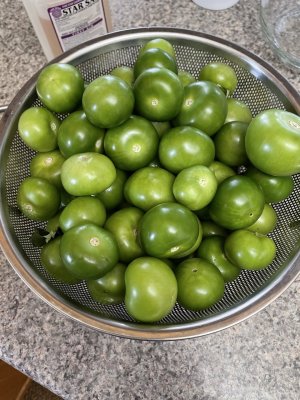
Next, sanitize your fermentation equipment. You can use any jar or food safe container. You don’t need to use an airlock, you just have to ensure the peppers stay below the brine level. More on that later. The pie plate will be used to weigh down the peppers to keep them submerged.
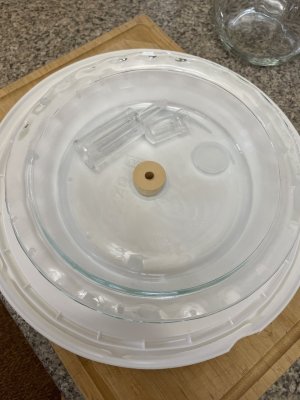
I use Star-San, and spray everything down. Star-San is a food-safe, no-rinse sanitizer, that can actually get into your fermentation without any worries. The saying in the home brewing world is “don’t fear the foam!”, meaning, don’t worry if you get some sanitizer in your brew.
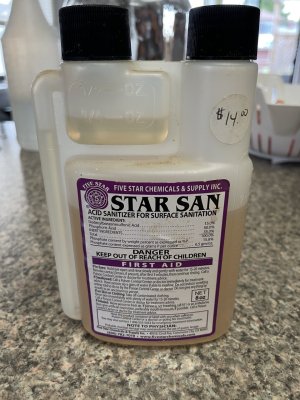
Next, if you’re dealing with hot peppers, especially super hots like Ghosts, wear some thick nitrile gloves. Your hands will thank you. Even with 8 mil gloves, mine are still tingling after collecting a few seeds and cutting up a pound of them. Super hot pepper residue in the eyes or on the wedding tackle will seriously ruin your day. I think their cursed appearance and smell should be enough warning for most folks with some common sense to proceed with caution. Don’t be like me, and bareback (with my hands, you pervert!) a litre of Carolina Reapers during your inaugural sauce making venture.
Now is also a good time to save some seeds, as pepper seeds are pretty expensive. To be honest, if you were to make a business of growing peppers, there’s probably more money in seeds than fruit.
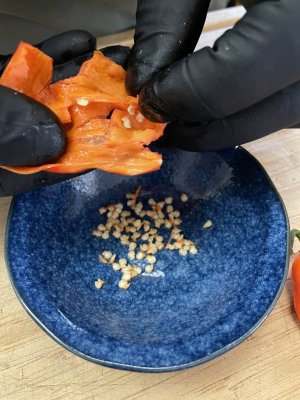
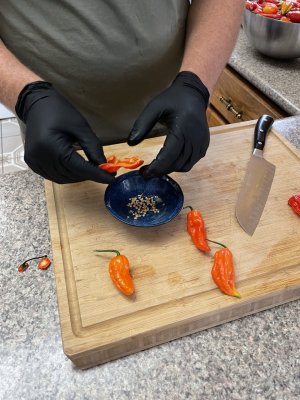
Chop your peppers up and fill your fermenter. Add your other fruit and veg.
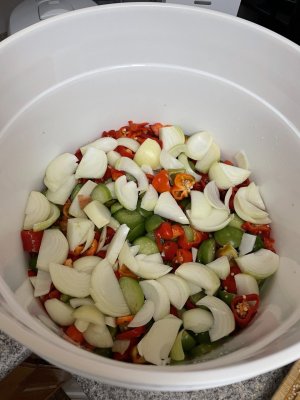
Next, add cold tap water. You need to accurately measure how much water you add, as the volume of water will determine how much salt you will add to the brine. For a big fermentation like this, I added 10 litres of water, and then dissolved my salt in the last litre for a total of 11. You want enough water to fully cover the peppers. You will be aiming for a 3% salt brine by weight: 30 grams salt per litre of water. In my case, 11 litres of water calls for 330 grams of salt.
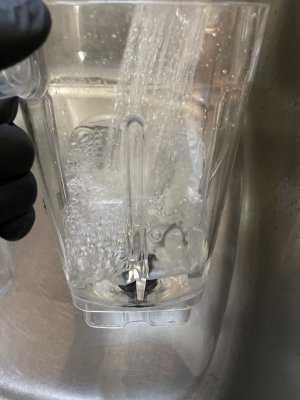
This is my third year of making hot sauce, so I’m by no means an expert. I do have some experience home brewing, and there are some techniques that carry over. The hot sauce I have made has been excellent, so I must be doing something right!
First, start off with some peppers. Bonus points if you grow your own. I’m using Aji Rico, Red Habanero, Ghost, and Super Chili peppers. This should be a pretty hot batch, just how I like it!

Next wash them well with cold water

You can add other fruits and veg to your fermentation. I’ve got a bunch of extra tomatillos, so I’ll be adding those, along with a few yellow onions

Next, sanitize your fermentation equipment. You can use any jar or food safe container. You don’t need to use an airlock, you just have to ensure the peppers stay below the brine level. More on that later. The pie plate will be used to weigh down the peppers to keep them submerged.

I use Star-San, and spray everything down. Star-San is a food-safe, no-rinse sanitizer, that can actually get into your fermentation without any worries. The saying in the home brewing world is “don’t fear the foam!”, meaning, don’t worry if you get some sanitizer in your brew.

Next, if you’re dealing with hot peppers, especially super hots like Ghosts, wear some thick nitrile gloves. Your hands will thank you. Even with 8 mil gloves, mine are still tingling after collecting a few seeds and cutting up a pound of them. Super hot pepper residue in the eyes or on the wedding tackle will seriously ruin your day. I think their cursed appearance and smell should be enough warning for most folks with some common sense to proceed with caution. Don’t be like me, and bareback (with my hands, you pervert!) a litre of Carolina Reapers during your inaugural sauce making venture.
Now is also a good time to save some seeds, as pepper seeds are pretty expensive. To be honest, if you were to make a business of growing peppers, there’s probably more money in seeds than fruit.


Chop your peppers up and fill your fermenter. Add your other fruit and veg.

Next, add cold tap water. You need to accurately measure how much water you add, as the volume of water will determine how much salt you will add to the brine. For a big fermentation like this, I added 10 litres of water, and then dissolved my salt in the last litre for a total of 11. You want enough water to fully cover the peppers. You will be aiming for a 3% salt brine by weight: 30 grams salt per litre of water. In my case, 11 litres of water calls for 330 grams of salt.

Attachments
Last edited:


